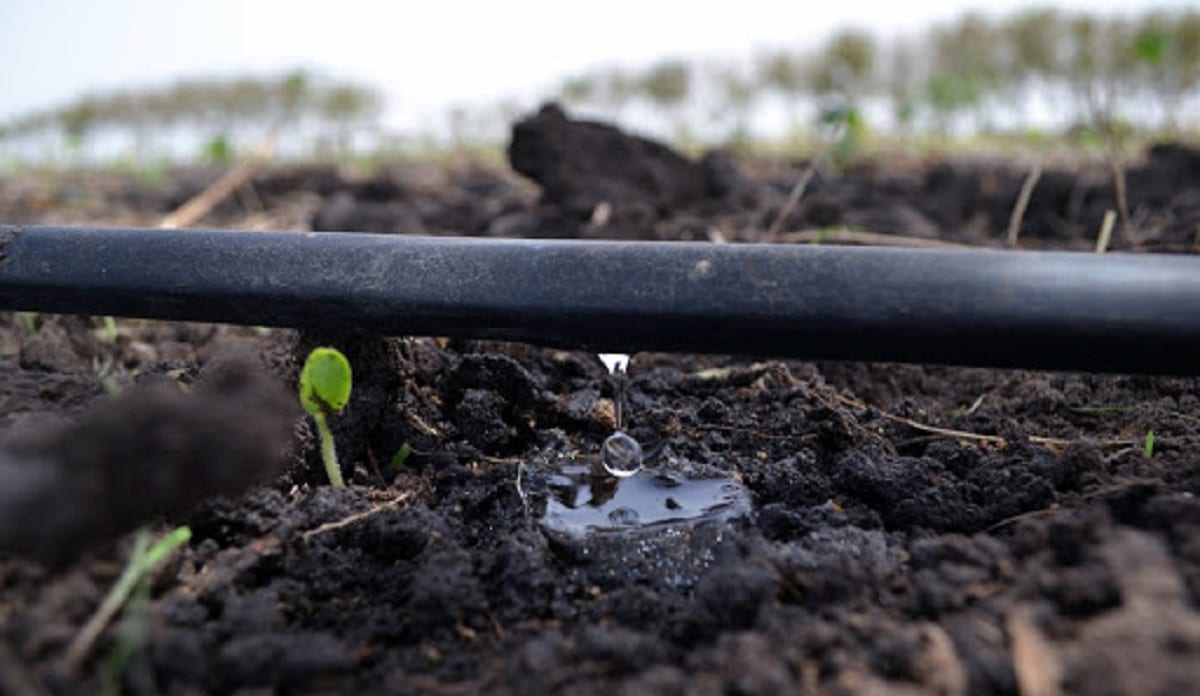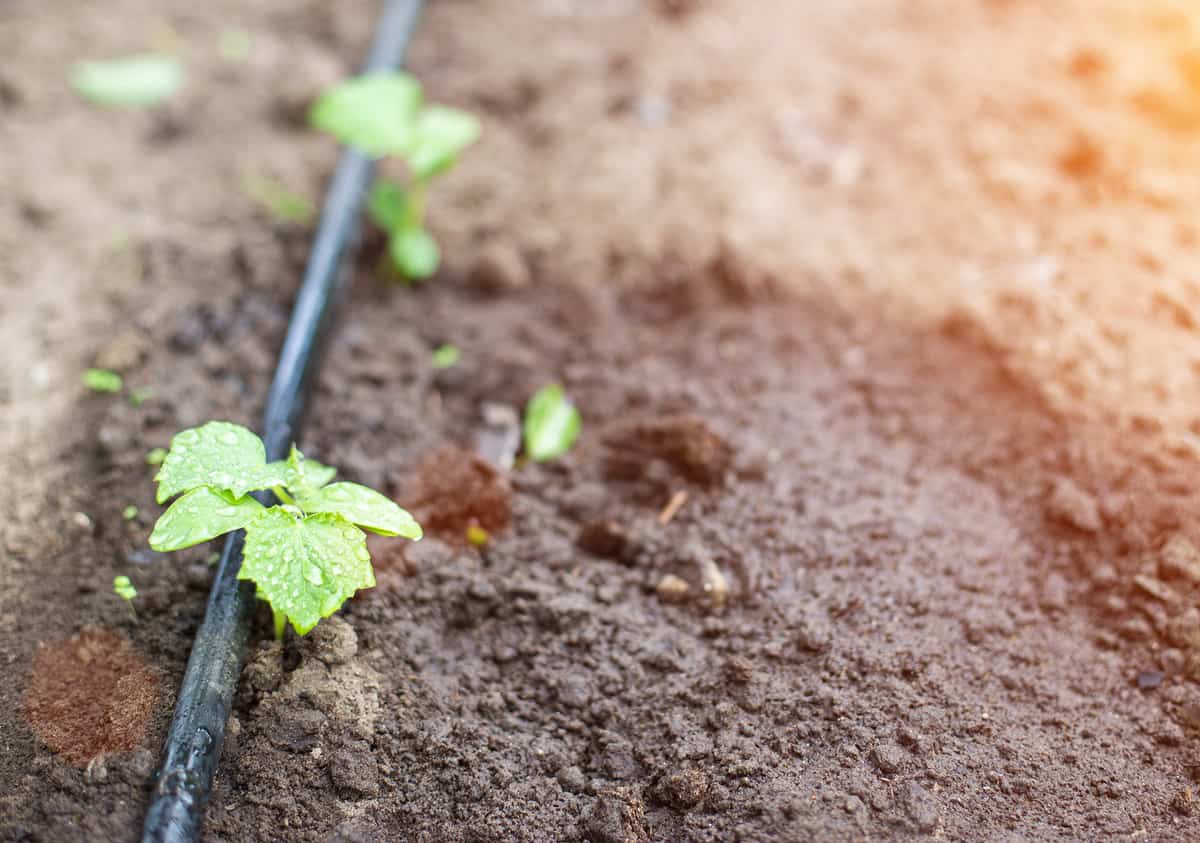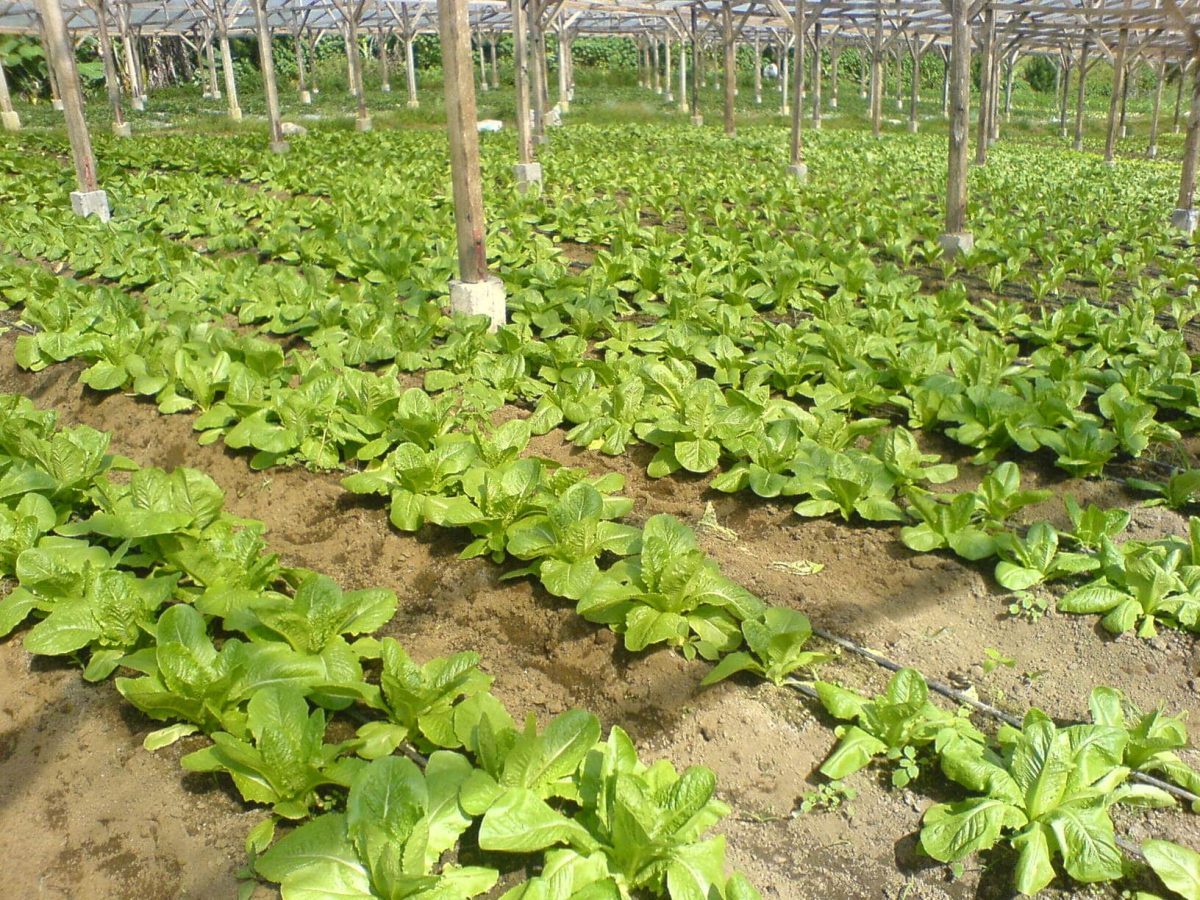
In order to make better use of water, ensuring that the plants can grow without problems, it is very interesting -as well as important if we live in an area where there is little rain- to install a drip irrigation system. But, what type? When we think about this irrigation system, an image like the one we can see above immediately comes to mind, but the truth is that there are several types of drip irrigation systems, and we will talk about all of them below.
In this article we are going to talk about the different types of drip irrigation systems and their characteristics.
What is drip irrigation
When we say that certain crops are going to be irrigated with a drip irrigation system, we focus on looking for localized irrigation. As indicated by drip irrigation to be able to use an optimal application of water and fertilizers in agricultural systems in arid zones. It must be taken into account that in areas where the climate prevails higher temperatures throughout the year there is a high rate of evaporation. If we carry out a conventional irrigation the losses that we have by evaporation will be more than if we do it by dripping.
The water that is applied will infiltrate the soil irrigating directly to the areas of influence of the roots from the pipe systems and emitters. Today, drip irrigation systems have had several emitter enhancements added. Let's see what these improvements are.
Self-compensating drippers
These are various emitters that are responsible for offering a fixed flow within a more or less wide pressure range. These drippers are quite useful, since their capacity lies in the homogenization of irrigation along the irrigation line. In conventional systems we know that the last emitters on the same line usually have a lower pressure than the first due to the fall of the same by the friction of the water with the pipe. This is solved with these self-compensating drippers.
Anti-drain drippers
These droppers They are responsible for closing automatically as the pressure of the irrigation system decreases. In this way, a complete discharge of the pipe does not occur. Therefore, there are some advantages such as avoiding the entry of air into the system. In addition, another of the advantages it has is that the irrigation pump does not need to load the system to start working. All this makes its use totally optimized.
Adjustable drippers
These droppers have an advantage over the others. And it is that they allow to regulate the flow that circulates through the pipeline thanks to a mechanical control.
Types of drip irrigation systems

Online dropper
It is the ideal for plants that are aligned, either in pots, planters or in orchards whose length is less than 5 meters. They are mounted in 4-6mm microtubes and are very interesting since you can put up to 12 drippers. Also, assuming the pressure is 1,5 bar, can supply 2 liters of water per hour.
Standard dripper
It is used to water plant by plant. For this type of system, 4 / 6mm microtubes are needed, and a 16mm pipe or, at the very least, tees and crosses. You can put up to 24 drippers in the microtube, and up to 250 in the tubing. If the pressure is 1,5 bar, supply 2,5 liters of water per hour.
Adjustable dripper
Highly recommended for watering potted plants. Its flow is from 0 to 60 liters per hour. To make the most of it, it is advisable to put a dropper in a microtube or 15 in a 16mm pipe.
Pipeline with integrated drippers
It is a drip irrigation system especially suitable for watering plants that are planted in the ground. By leaving a separation of about 33cm between drippers and creating networks of up to 75m in length, we can supply the water needs of many trees, shrubs, flowers and the garden. The flow rate is about 2 liters per hour.
Porous pipe
It is a type of manufactured pipe that has micro-holes throughout its surface through which the water flows out. Thanks to it you can save up to 50% of the precious liquid, and if it is buried up to 70%. The most suitable pressure is between 0,5 and 0,8 bar, with a flow rate of 6-9l / h.
Advantages of drip irrigation
As we know, these systems offer certain advantages over other conventional ones. Let's see what are the main advantages of drip irrigation:
- Significantly reduces the amount of water lost through evaporation both during irrigation and soil.
- It allows automating a large part of the system with great savings in labor. Controlling the fertilizer application rates is much more accurate and easy.
- Allows the use of more saline waters for irrigation than surface and sprinkler irrigation systems. This is because it is able to maintain humidity is high in the bulb made by the emitters.
- It has a greater ability to adapt to uneven terrain, rocky or steep slopes.
- Reduces unwanted weed growth in areas that are not irrigated.
- Allows a controlled supply of nutrients with water without having losses due to leaching with the possibility of modifying at any time during the cultivation.
We know that these systems are very widespread in the use of fruit, citrus, vine and horticultural crops, especially in areas where there is not a large capacity for water resources. We are going to analyze which are the parts of the installation of these drip irrigation systems:
- Pumping group: It is used to supply the adequate pressure and flow throughout the installation.
- Filtration: the filtration will depend on the amount of water and the size of the nozzle that have a sprinkler.
- Subscriber system: they serve to apply fertilizers.
- Pipe network
- Emitter carrier pipes: the flow and the separation between emitters will depend entirely on the crop we are treating and the characteristics of the soil where we are.

Image - Wikimedia / Kleomarlo
I hope that with this information you can learn more about the types of drip irrigation systems.
CAN FUNGICIDES, ACARICIDES, ETC, BE APPLIED THROUGH THE DROP IRRIGATION SYSTEM?
Hello Mauricio.
It depends. There are some products that are applied on the leaves, that is to say, they are by foliar application.
But if you don't put this in the container, then you can through watering.
Greetings.